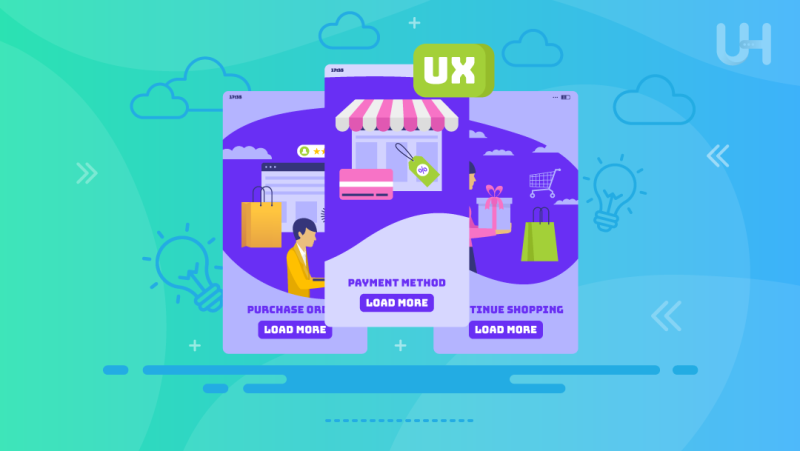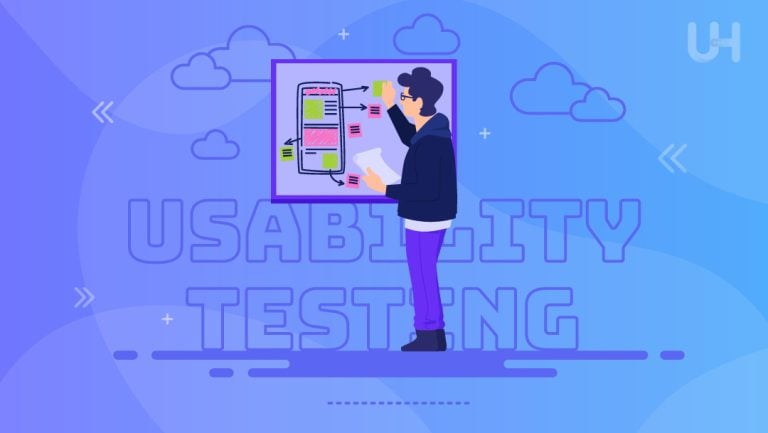The eCommerce UX is defined as how customers interact with an online store, making the shopping experience smooth, enjoyable, and efficient. A good design of an e-commerce site ensures that people without frustration can simply find their products and complete purchasing. Customer experience depends much on UX design and plays a vital role in making a business successful.
The importance of UX in eCommerce cannot be overstated. A smooth, user-friendly design drives conversions as it makes it easier for customers to complete their purchases. Further, good UX enhances customer satisfaction, which leads to repeat business and improved retention rates. In this post, we will provide actionable tips to help businesses bring about better eCommerce UX design. By following these best practices, companies can enhance the usability of their site increase sales, and build lasting relationships with their customers.
What is eCommerce UX?
E-commerce UX means the interaction between a user and an online shop. It focuses on the comfort and enjoyment of the process of shopping through the online shop. The process in UX design is pretty simple: easy to browse, visually attractive, and fully functional. A good eCommerce UX design created by an expert designer or UI/UX consultancy guarantees easy search for products offered, an easy understanding of information, and easy purchase without extra effort by the customers.
Key elements of eCommerce UX
It encompasses many key elements that all interact with each other.
- Navigation: Clear menus, search functionality, and product categorization
- Visual Design: Attractive layout, color schemes, and typography related to the brand
- Functionality: Fast pages, secured checkout, and no broken links
- Accessibility: Features that make the website usable for people with disabilities, such as screen reader compatibility.
These elements combine to create an experience that invites people to stay on your website and shop.
eCommerce UX: Beyond Aesthetics
Good UX is more than visual appeal. It’s about functionality, ease of use, and satisfaction for the customer. A beautiful website can be useless if it is hard to navigate through, or if it lacks what users need. It means that users don’t like slow-loading pages or lengthy checkout processes. To truly understand what users need and expect, utilizing a user research platform can provide valuable insights. Brilliant eCommerce UX integrates style and substance to deliver value to the user.
Significance of the User’s Journey
It covers every stage of the user’s journey. It ranges from browsing, adding items to the cart, checking out, and even post-purchase support. Every stage has to be positive, for example: during browsing, they need clear categories and search options; during checkout, clear secure payments and transparency in costs; while post-purchase, timely updates, and customer support keep them satisfied. Hence, designing with the user’s journey ensures that customers would be valued, therefore increasing loyalty and repeat business.
Why eCommerce UX Design Matters?
The eCommerce UX design is essential to ensure higher conversion rates, loyalty, and positive company and brand image.
Conversion Rates and Sales
Conversion rate is another key variable of good eCommerce UX. It makes people shop easily and gets them to make purchases. Poor UX causes frustration and cart abandonment. Studies illustrate that more than 70% of the carts are abandoned, either because of the complex navigation process or the slow checkout procedure. Whenever businesses optimize their UX, they reduce these problems as well as boost sales. Clear call-to-action, fast page load, and intuitive layout have much to contribute in terms of conversion.
Customer Retention
A good UX design not only attracts the customer but also retains him. It is more likely that a user who has a pleasant shopping experience will become a loyal customer. Loyalty programs, personalized recommendations, and ease of reordering enhance retention. Satisfied customers also tend to pass on their positive words, bringing in new users. Investing in UX builds trust with the audience and allows a long-term relationship.
Brand Perception
An intuitive and user-friendly experience reinforces the image of a brand. Customers associate professionalism and reliability with a good quality website design. On the contrary, a low-quality website can make a brand untrustworthy. Features such as secure payment options and clear product descriptions also enhance credibility. A beautiful design leaves a long-term impression, too. A positive perception encourages users to recommend the brand to others, thereby increasing its reach.
Mobile Shopping
Mobile-friendly design is now the key to success in eCommerce. Most shoppers now shop on their smartphones, so websites need to adapt to smaller screens. A responsive design helps in easy browsing, shopping, and checkout on any device. According to some research, those sites that may be hard to navigate or slow to load will be deserted by mobile shoppers. Mobile optimization enhances the satisfaction of users, as well as boosts the conversion rate. Businesses that take mobile UX seriously remain competitive in this fast-paced digital world.
Core Principles of eCommerce UX Design
The core principles of eCommerce UX facilitate a seamless, inclusive, and efficient shopping experience for all users.
Usability
Usability is the base that supports excellent eCommerce UX. It is about designing and facilitating websites that make navigation easy and interactive. Good usability has a clear menu and intuitive design, meaning users can easily find what they are looking for. For example, effective search functionality and well-organized product categories make it easier to browse. Simple interactions, like putting an article into the cart or checking out, will keep visitors at their stations longer. When usability is made a priority, customers feel less frustration which results in higher satisfaction and more conversions.
Accessibility
Accessibility ensures that everyone, including people with disabilities, can use your website. This principle involves designing for inclusivity, such as providing sufficient color contrast and descriptive alt text for images. Screen reader compatibility and keyboard navigation are also essential. Accessibility not only meets legal standards but also creates a welcoming experience for a wider audience. By improving the website’s accessibility, businesses demonstrate their commitment to inclusivity, which improves brand reputation.
Consistency
Consistency throughout the website creates trust and enhances user experience. Use the same colors, fonts, and logos to create consistent branding. A uniform layout will ensure the user always knows where to find information no matter which page they visit. For instance, the position of the cart icon at the same place on every single page. When design elements are predictable, users feel more confident navigating the site, leading to better engagement and conversions.
Speed and Performance
Site speed and performance are critical to eCommerce success. Slow-loading pages frustrate users and drive them away. Studies show that even a one-second delay in page load time can significantly reduce conversions. To optimize speed, businesses should compress images, enable caching, and reduce unnecessary code. Fast-performing websites not only improve user satisfaction but rank higher in search engine results. A speedy, efficient site ensures users stay longer and complete their purchases with ease.
Take Your eCommerce Store to the Next Level
eady to enhance your online store’s user experience and boost sales? Pair great UX design with reliable hosting. Discover UltaHost’s eCommerce Hosting solutions to ensure fast loading times and seamless shopping experiences!
eCommerce UX Best Practices for Design
Following eCommerce UX best practices ensures a user-friendly, engaging, and conversion-focused shopping experience.
Responsive and Mobile-First Design
Responsive and mobile-first design is essential for modern eCommerce websites using enterprise WP hosting servers. It ensures that the site adapts seamlessly to any screen size, from desktops to smartphones. A mobile-first approach prioritizes the needs of mobile users by creating layouts that work perfectly on smaller devices. Flexible grids, scalable images, and responsive elements make the site accessible to all users. As mobile shopping grows, businesses that focus on responsive design stay competitive and improve user satisfaction.
Intuitive navigation is key to a positive user experience. User-friendly menus, visible categories, and a strong search bar make it easy for customers to find products. Adding filters and sorting options further enhances navigation, helping users refine their searches. A simplified site structure reduces confusion and guides customers through their shopping journey. With clear navigation, users spend more time on the site, increasing the chances of conversion.
User-Centered Product Pages
Product pages should prioritize the needs of the customer. High-quality images, zoom features, and 360-degree views give users a clear understanding of the product. Descriptive and concise product information helps answer questions quickly. Including detailed specifications ensures customers have all the information they need to make informed decisions. Engaging elements like videos and customer reviews create trust and encourage purchases.
Effective Use of CTAs (Call to Action)
Call-to-action (CTA) buttons play a major role in driving conversions. They should be clear, visually appealing, and strategically placed. For instance, buttons like “Add to Cart” or “Buy Now” should stand out with bold colors and compelling text. Placing CTAs in prominent locations, such as near product images or descriptions, ensures users see them easily. A well-designed CTA encourages users to take the next step in their shopping journey.
Trust Signals
Trust signals reassure customers about the safety and reliability of the website. Secure payment icons, reliable SSL certificates, and privacy policies build confidence in transactions. Displaying customer reviews, ratings, and testimonials further validates the quality of products and services. Trust badges, such as “Money-Back Guarantee” or “Verified Seller,” create a sense of security. By incorporating trust signals, businesses can reduce hesitation and boost conversions.
Personalization
Personalization greatly enhances the shopping experience by tailoring content to individual preferences. By using data such as browsing history and purchase behavior, businesses can effectively recommend relevant products that align with customer interests. Additionally, personalized email campaigns, special offers, and timely reminders keep users engaged and encourage repeat visits.
Moreover, features like the “Recommended for You” sections further make customers feel valued and understood. As a result, by focusing on personalization, eCommerce websites can not only improve customer satisfaction but also significantly increase sales. Therefore, investing in personalized experiences is a powerful strategy for fostering customer loyalty and boosting overall business performance.
Streamlining the Checkout Process

Streamlining the checkout process ensures a faster, hassle-free experience that reduces cart abandonment and increases conversions.
Minimizing Cart Abandonment
A streamlined checkout process reduces cart abandonment and boosts sales. Complex or lengthy processes often frustrate users, causing them to leave without completing their purchases. Simplifying the steps to checkout is essential. For instance, enabling guest checkout eliminates the need for mandatory account creation. Auto-filled details, such as saved addresses or payment information, save users time and effort. By creating a quick and intuitive process, businesses improve the likelihood of completed transactions.
Multiple Payment Options
Providing multiple payment options enhances user convenience and trust. Different customers prefer different methods, such as credit cards, PayPal, or digital wallets like Apple Pay or Google Pay. Offering a range of secure options ensures users can choose what suits them best. Flexible payment solutions, such as buy-now-pay-later plans, also attract a wider audience. By catering to diverse payment preferences, businesses make it easier for customers to complete their purchases.
Transparency with Shipping and Fees
Transparency about shipping and fees is crucial for building trust during checkout. Unexpected costs are one of the main reasons for cart abandonment. Display shipping costs, delivery times, and any additional charges before the final step. Providing options like standard, express, or free shipping ensures users can make informed decisions. Transparency not only reduces surprises but also creates a positive impression, encouraging repeat purchases.
Visual Design and Aesthetic Choices
Striking the right balance between aesthetics and functionality enhances user engagement and supports a seamless shopping experience.
Color Theory and Visual Hierarchy
Color plays a crucial role in guiding user attention and creating emotional connections. Strategic use of color highlights important elements, such as “Add to Cart” buttons or limited-time offers. Bright, contrasting colors can make CTAs more noticeable and encourage action. Additionally, color schemes should align with the brand’s identity, creating a cohesive look. Visual hierarchy, achieved through color, size, and positioning, helps users focus on key elements without feeling overwhelmed.
Typography and Readability
Typography greatly impacts readability and the overall user experience. Legible fonts with appropriate sizes make text easy to read across all devices. Pairing complementary fonts for headings, subheadings, and body text creates visual interest. Consistent spacing and alignment add structure, improving readability. Avoid decorative fonts for essential information, as they can confuse users. Prioritizing typography trends ensures users can quickly grasp details without frustration.
Imagery and Graphics
High-quality imagery and graphics are essential for capturing user interest. Product images should be clear, professional, and accurately represent the item. Features like zoom options or 360-degree views enhance the shopping experience. Graphics, such as icons or banners, add visual appeal but should be used sparingly to maintain balance. Overloading the page with visuals can distract users, so it’s important to prioritize clean, well-organized designs. A thoughtful combination of imagery and graphics keeps users engaged and focused on the shopping journey.
Speed and Performance Optimization
Optimizing website speed and performance is crucial for delivering a seamless user experience and reducing bounce rates.
Importance of Load Speed
Website load speed has a direct impact on user experience and conversions. Slow-loading pages leads to higher bounce rates, as users often abandon sites that take too long to load. Studies show that even a one-second delay in page load time can result in a significant decrease in conversion rates. To optimize speed, businesses should use practices like image compression and caching. Implementing lazy loading ensures that only the visible portion of the page loads first, improving overall performance.
Reducing Technical Issues
Technical issues, such as broken links or slow-loading pages, frustrate users and harm their experience. It’s important to regularly test the site to ensure all links are functional and pages load quickly. Routine maintenance, such as updating software and plugins, helps prevent glitches that can disrupt user interactions. Monitoring website performance through tools like Google PageSpeed Insights can identify areas for improvement. A technically smooth website keeps users engaged and encourages them to complete their purchases.
Optimizing for Multiple Browsers and Devices
Ensuring cross-browser compatibility and optimizing for multiple devices is essential for reaching a wider audience. Users may access your site on different browsers (e.g., Chrome, Firefox, Safari) and devices (e.g., smartphones, tablets, desktops). Testing the site on various platforms ensures it functions seamlessly across all environments. Responsive design is key to adapting the layout for different screen sizes, providing a consistent experience. By prioritizing cross-browser and multi-device compatibility, businesses can cater to all users, improving satisfaction and engagement.
Boost Your eCommerce Site with SEO Hosting
A great user experience starts with a fast and reliable website. Elevate your eCommerce store’s performance with UltaHost’s SEO VPS Hosting. Enjoy lightning-fast speeds, improved SEO rankings, and seamless shopping experiences!
Accessibility in eCommerce UX
Accessibility ensures that all users, including those with disabilities, can enjoy a seamless shopping experience.
Designing for Accessibility
Designing for accessibility involves following guidelines to make websites usable for everyone, including people with disabilities. The Web Content Accessibility Guidelines (WCAG) provide a framework for creating accessible content. These guidelines focus on four key principles: making content perceivable, operable, understandable, and robust. For example, providing text alternatives for non-text content, ensuring sufficient color contrast, and creating adaptable layouts that work for all devices and screen sizes. By adhering to these guidelines, businesses improve inclusivity and ensure that their site is accessible to a broader audience.
Implementing Screen Reader Compatibility
Screen reader compatibility is essential for users with visual impairments. Designing for screen readers involves providing descriptive alt text for images, buttons, and other non-text elements. Alt text helps the screen reader convey information about the image, such as its purpose or content. Ensuring proper heading structure and semantic HTML also enhances screen reader functionality. By focusing on these elements, businesses improve the experience for visually impaired users, making navigation and decision-making easier.
Keyboard navigation is vital for users with mobility impairments who may not be able to use a mouse. Ensuring that all interactive elements, such as buttons, links, and forms, are accessible via keyboard is crucial. Users should be able to tab through the site in a logical order, with clear focus indicators showing where they are on the page. Keyboard shortcuts can also speed up navigation. By optimizing keyboard navigation, businesses ensure that all users, regardless of their abilities, can interact with the website smoothly.
The Role of Micro-interactions in eCommerce UX
Microinteractions are small, subtle animations and responses that help guide users or provide feedback. Specifically, they occur in response to user actions, creating a more interactive and dynamic experience. For instance, examples of microinteractions include hover effects, loading animations, or button clicks, all of which respond directly to user behavior. Moreover, these actions offer immediate visual feedback, confirming the user’s interaction and providing reassurance.
As a result, by responding to user behavior, micro interactions make the experience more engaging, intuitive, and enjoyable. Additionally, they help users feel more connected to the website, enhancing the overall user experience. Consequently, micro-interactions play a crucial role in improving usability and ensuring that users feel confident and comfortable navigating the site.
How Microinteractions Improve UX
- Enhance user satisfaction by providing immediate feedback after actions (e.g., “Item added to cart” confirmation).
- Guide user behavior with subtle cues, such as highlighting buttons or indicating changes in the cart.
- Increase engagement by adding playful, satisfying elements, like a spinning icon during loading times.
- Provide clarity through feedback like progress bars or notifications, improving user confidence.
- Create a sense of responsiveness that makes the website feel more intuitive and enjoyable to use.
UX Design for Different Types of eCommerce Websites
Each type of eCommerce website has unique design requirements to cater to its specific audience and business needs.
B2C (Business to Consumer) eCommerce UX Design
In B2C eCommerce, the focus is on customer emotions, simplicity, and quick transactions. The design should create an enjoyable and seamless shopping experience. Clear calls to action (CTAs), such as “Add to Cart” or “Buy Now,” should be easy to find. Visual appeal is important, with attractive product images, simple navigation, and fast-loading pages. Additionally, a smooth and quick checkout process is crucial to reduce cart abandonment. Personalization, such as product recommendations or special offers, can also enhance the user experience and drive conversions.
B2B (Business to Business) eCommerce UX Design
B2B eCommerce sites often deal with more complex transactions and larger-scale orders. UX design must cater to bulk ordering, multiple user roles, and detailed product catalogs. These websites need robust search functionality, allowing users to filter by product specifications or categories. Multiple login levels, such as admin or buyer roles, should be clearly defined for different users. Since B2B transactions tend to involve larger quantities and higher-value items, providing quotes, volume discounts, and payment terms is essential. The design should prioritize ease of use and efficiency, allowing businesses to complete orders quickly.
Marketplace eCommerce UX Design
Marketplaces, which connect multiple sellers and buyers, have distinct and unique design needs. First and foremost, easy browsing and a well-organized catalog are absolutely key to helping users find products quickly and efficiently. Furthermore, user reviews, ratings, and detailed seller profiles not only build trust but also significantly aid in decision-making. In addition, filtering options, such as price range, product ratings, and brand, make it much easier for users to narrow down their search effectively.
Moreover, the design should seamlessly allow customers to compare products and view detailed product pages without any hassle. Finally, a simple checkout process that integrates multiple sellers and payment methods is essential to prevent any confusion and ensure a smooth shopping experience.
Common eCommerce UX Mistakes to Avoid
- Cluttered, Overwhelming Design: Too much content or too many options can overwhelm users. A poor layout with disorganized elements makes navigation difficult. Over-cluttered designs lead to a confusing experience and increase bounce rates.
- Inconsistent Design Elements: Inconsistent branding, color schemes, or font choices disrupt the user experience. Users expect a uniform design across the entire site, which builds trust and recognition. Variations in design elements can confuse and diminish the website’s credibility.
- Complex Navigation: Overly complicated navigation makes it hard for users to find what they’re looking for. A confusing menu structure can frustrate users and increase abandonment rates. Clear, intuitive navigation ensures a smooth user journey and reduces frustration.
- Ignoring Mobile Users: Not optimizing for mobile users can severely hurt your eCommerce sales. A non-responsive website leads to a poor experience on smartphones and tablets. Mobile-friendly designs are essential for reaching today’s on-the-go shoppers and increasing conversions.
Future Trends in eCommerce UX
The eCommerce industry is continuously evolving, and staying ahead of the trends is essential for maintaining a competitive edge. New technologies and innovative features are shaping how users interact with online stores.
Artificial Intelligence and Personalization
Artificial Intelligence (AI) is revolutionizing the eCommerce user experience by making it more personalized. AI analyzes user data to deliver tailored product recommendations. This makes the shopping experience feel more relevant and engaging. For example, AI-powered systems can suggest products based on previous purchases, browsing behavior, and preferences. Furthermore, AI chatbots provide instant customer support, answering questions and guiding users through the buying process. These chatbots are available 24/7, enhancing convenience for users. Predictive analytics is another AI-driven trend, helping eCommerce sites anticipate what users might need next. By implementing these technologies, businesses create more personalized, efficient, and enjoyable experiences that encourage customers to return.
Voice Search Integration
Voice search is becoming increasingly popular, as more consumers turn to smart speakers and voice assistants for convenience. As a result, eCommerce sites must quickly adapt to this shift by optimizing their platforms for voice commands. This adaptation involves using natural language processing (NLP) to make the search experience more intuitive and user-friendly.
Additionally, by focusing on conversational keywords, businesses can ensure that their products are easily found through voice search, which is becoming a growing trend. Moreover, voice-activated shopping is not only more convenient but also allows users to shop hands-free, enhancing the overall experience. As more people rely on voice search, websites with voice search optimization will naturally stand out from the competition. Therefore, integrating voice search is not just beneficial but crucial for enhancing accessibility, improving usability, and providing a smoother, faster shopping experience for all users.
Augmented Reality (AR) in UX
Augmented Reality (AR) is changing how customers experience products online. AR allows users to visualize and interact with products in a virtual space, enhancing their decision-making process. For example, AR can help customers try on clothes, see how furniture fits in their homes, or preview makeup products on their faces. This interactive experience builds confidence and reduces uncertainty when buying online. By using AR, eCommerce businesses can offer a more immersive and engaging shopping experience. Additionally, it helps reduce returns, as customers can make more informed choices. As AR technology improves, its integration into eCommerce websites will become a vital feature for boosting conversions and user satisfaction.
Conclusion
Investing in eCommerce UX is essential for long-term business success. A well-designed user experience increases conversions, enhances customer satisfaction, and builds brand loyalty. By following best practices such as responsive design, clear navigation, and personalized experiences, businesses can create an intuitive shopping environment. Additionally, regularly gathering user feedback and optimizing based on data ensures continuous improvement. Therefore, applying these UX tips will help businesses stay competitive and meet customer expectations. Ultimately, a strong focus on UX leads to better user engagement and sustained growth in the eCommerce landscape.
If you’re looking to build a strong online presence for your store, start with the perfect domain. With a .shop domain from UltaHost, you can create a memorable and professional web address that sets your eCommerce business apart.
FAQ
What is eCommerce UX, and why is it important?
eCommerce UX refers to the customer’s experience while shopping online. It’s crucial because a good UX improves customer satisfaction, reduces bounce rates, and boosts conversions.
What are the key elements of eCommerce UX?
Key elements include intuitive navigation, mobile responsiveness, fast loading speeds, clear CTAs, and a simple checkout process.
How can I improve the UX of my online store?
Improve UX by conducting usability tests, optimizing navigation, using quality images, offering multiple payment options, and ensuring fast load times.
How does website speed affect UX?
Fast-loading websites provide better user experiences, reduce abandonment rates, and improve conversions.
What common eCommerce UX mistakes should I avoid?
Avoid slow load times, unclear policies, poor mobile optimization, complicated navigation, and excessive pop-ups.
How can I simplify the checkout process?
Simplify it by minimizing required fields, offering guest checkout, and providing secure, multi-payment options.
How can I measure eCommerce UX success?
Track metrics like conversion rates, bounce rates, and cart abandonment while collecting user feedback and running A/B tests.













